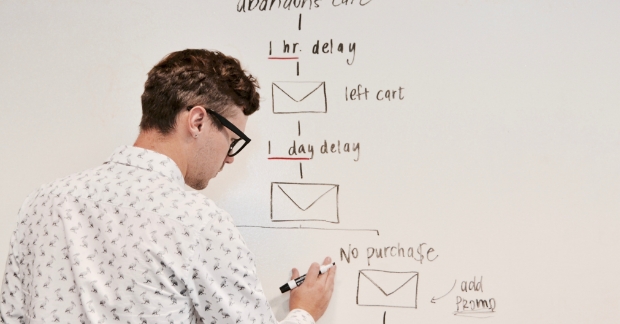Did you ever walk into a store in a mall (remember those?!) and in no more than three steps, a sales associate was standing next to you, asking how they could help?
It was annoying, to say the least, and could be the reason you turn around and avoid going back to that store for a while.
Sending emails to your prospects and customer lists can easily get out of control and backfire on you, like those mall store associates’ approaches.
What you need to consider is a partner approach. Your prospects have a problem and they are looking for a solution. They want to know what they can do to solve their issue or fix a need, how it can be accomplished and what it will take from them - both in time, support and money.
More of the sales process than what you realize should be focused on education. Positioning yourself as a partner, a true resource they can turn to in order to learn and be better at their jobs, is worth so much in the end.
Great! Let’s become a partner.
We’re excited you’re so excited, but let’s plan out your approach a little. By looking at what information, content and methods (like newsletters) you have, you can determine how to set up a marketing workflow and subsequent sales sequences.
So what’s a good number of touchpoints before going in for a sale? Well, it depends. Typically, two or three pieces of educational information will fully frame a prospect’s’ view of what they need - and if you are the solution.
The type of content can vary (and should be a combination of written and video), but it’s more the fact that you’re offering them educational material that counts.
And, it shouldn’t be all educational about your company or specific offering. You want to frame the content in a manner that outlines a problem your target audience faces regularly, what the solution is, and oh by the way, that you do provide it. (But that should be a small mention.)
Workflows or sequences?
HubSpot makes it easy to tackle these two types of emails, keeping marketing workflows and sales sequences separate, and offering specific templates for each section.
It also protects your prospects and leads from yourself. For example, marketing workflows allow you to automatically enroll a potential customer. Let’s say someone sees an interesting paid post on LinkedIn about your new case study and they click on the ad. You can enroll that person in a workflow to show them additional content and information to teach them what you want them to learn about your offering and the problem they’re trying to solve.
That automatic entry is a great way to continually bring in more potential leads. Once someone completes specific actions in that workflow - such as requesting a demo or attending an event - you can manually enroll them in a sales sequence.
These different templates provide you with a proven setup to maximize your efforts. Knowing that where a person is in the sales process factors into how they consume information, you can build clean, clear and engaging messages and offers using a proven setup.
Sequences provide similar contact options, taking leads through a specific set of emails you create so that you’re still guiding them. Once someone confirms a meeting with you, they’re removed from the sequence. This is another big difference between sales sequences and marketing workflows. You want to be able to have more of that control over leads you’re talking with in a sequence, and rely more on goals and automation on the marketing side.
Again, it’s the personal touch at the right time.
Get ready to email
But who should I send what to…and when?
This is a great question. When and how often you contact someone depends on a variety of factors, and B2B tech marketers all are vastly different in their own goals. It’s definitely not a one-size-fits-all approach. But there are rules you can use to keep your plan in its lane.
First, look at your overall contacts and place all of your existing customers into a list. This allows you to reach out to these people in specific, thoughtful ways while easily suppressing them from all other mailings. The second list to build if you have not yet is a bounced list. Doing so - and using it in workflows - will help your send rates improve. Better yet, find updated email addresses for contacts in HubSpot who’ve bounced so you do not lose out on valuable engagements!
Now, the number of contacts you’re left with is more reflective of your potential leads. You can build a few basic lists to gauge where a person’s interest level is. Some basic starting points include asking if they have:
- Opened an email in the last 60, 90, 120 days?
- Visited a landing page?
- Filled out a form?
- Clicked on links - in emails, on blogs, on social media posts?
- Shared a piece of content?
Depending on the types of content, emails, newsletters and landing pages you have set up, your starting questions will differ from others. But this will allow you to do a base analysis of what your contacts are doing (or not). Using this information can guide you in your next step of adding the right types of content to your site and promoting it in emails, social media and other measurable methods.






